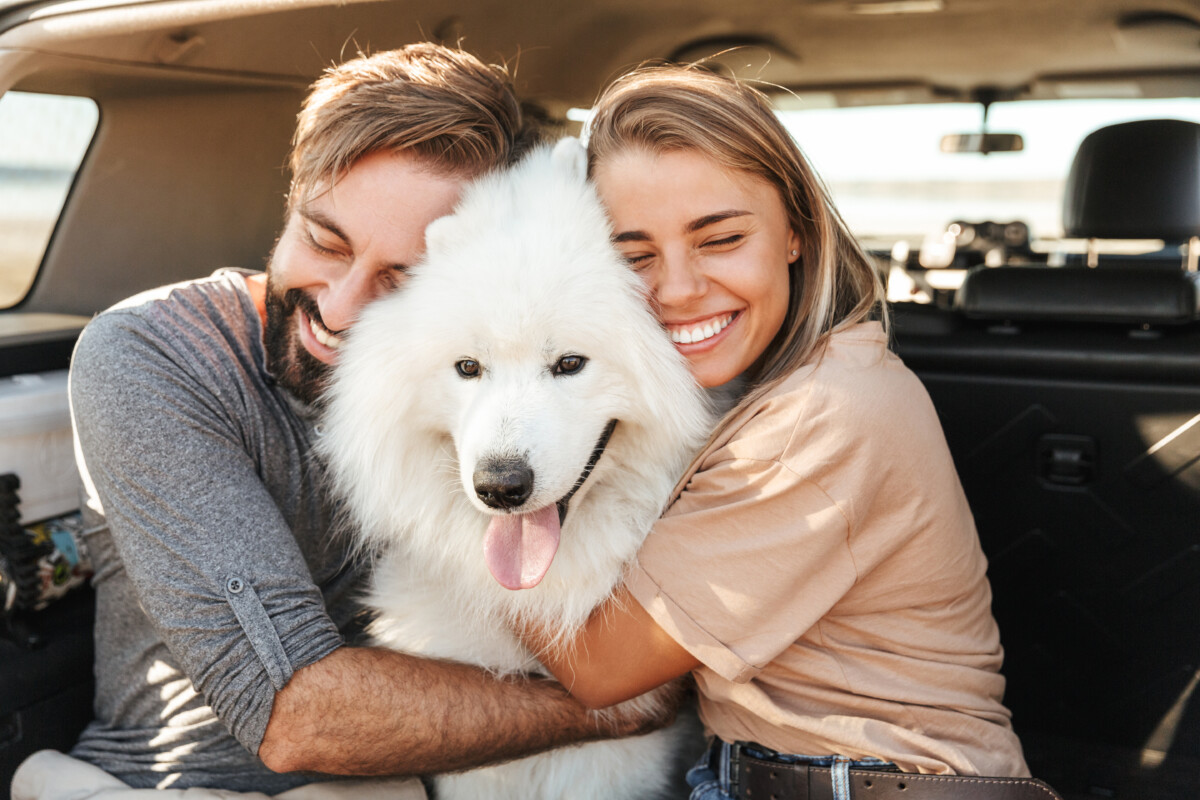Moving with your dog requires careful planning to make sure they feel comfortable and at ease throughout the process. Dogs can be affected emotionally by the change and may experience lingering effects long after you’ve settled into your new home. To help ease your dog through the moving process, there are several tips you can try, and if you are a cat owner, don’t forget to check the purrfect tips for you and your four-paw friend.
Tips for Moving with Your Dog
When packing for your move, think about what your dog will need during the journey and in the first week of arriving. This may include food, medications, vaccination records and certificates of health, toys, treats, a blanket or towel with a familiar smell, potty waste bags, puppy pads, and extras of items you might misplace, such as a collar or harness with ID tags, and a leash.
Schedule a time to update your dog’s vet records to ensure they are up to date on required vaccinations. Your new home may have stricter requirements for shots, so it’s important to call ahead and see what kind of licensing and paperwork you’ll need. Check whether you’re bound by pet policy or Homeowners Association (HOA) fees or shot requirements.
Consider microchipping your pet to make it easier to track them down if they get lost. At a minimum, put a collar and ID tags with your contact information on your dog before you leave the house. Keep clear, current photos of your dog on your phone and print copies to hand to people if you need to get the word out about your pet.
Before you leave your old home, do a final check to make sure you’ve packed everything your dog will need. Use a handy guide for a moving day dog kit to ensure you have everything in one list.
Post-Move Considerations for Your Dog
If you’re moving with your dog, transportation can be a tricky issue that requires careful consideration to ensure the safety and comfort of your furry friend. For local moves, it may be as simple as a stroll down the street. However, for longer journeys, such as a cross-country move, it’s essential to plan ahead and research what’s required for a legal and comfortable ride.
If you decide to use a pet transportation service, make sure to do your due diligence in selecting a licensed and reputable company with experienced animal handlers. The International Pet and Animal Transportation Association can help you find trustworthy pet shipping companies.
If you prefer to move your dog yourself, here are some helpful tips:
- Traveling by car is a popular choice for many pet owners, but it’s important to secure young dogs in a puppy-specific car seat, travel crate, or carrier. To acclimate your dog to this arrangement, take them for a test drive around the block in their new gear a few times. Never let your dog roam free in the car, as it can be dangerous for them and distracting for you as the driver.
- Flying can be an option for long-distance moves, but it requires careful preparation. Airlines have their own regulations and guidelines for boarding, so make sure to read these well in advance of your flight. Larger dogs will typically need to stay in a checked crate or carrier in the cargo hold, while smaller dogs may be able to fly in the cabin as your carry-on item for an additional fee.
Preparing for air travel with your dog can be a lengthy process that includes verifying their health, vaccination records, and ensuring that they’ve been fed within four hours of departure. It’s also important to note that extreme temperatures can halt animal shipping. Check for any new regulations for supporting animals, as not all dogs who flew freely in the cabin in the past may still qualify.
During the trip, it’s important to provide your dog with access to fresh water and snacks. However, some dogs may not tolerate travel well and could experience motion sickness or anxiety. Talk to your vet about any dog-approved medications that can help with these issues. But remember, some sedatives can have adverse effects on dogs at high altitudes, so make sure to inform your vet that your dog is flying.
Arriving at Your New Home: Tips for Helping Your Dog Transition
Moving to a new home can be a stressful experience for anyone, including your furry friend. As you prepare for moving day, make sure to take some extra time to consider your dog’s needs during and after the move. Here are some essential considerations to keep in mind:
Finding Pet Care Services
One important step to take after settling into your new home is to find a reliable dog walker, groomer, and veterinarian. However, this process can take time and patience. You may have to explore the area and ask for recommendations from locals to find the best services for your pet.
Updating Microchip Information
It’s crucial to update your dog’s microchip information with your new address and contact details as soon as you move. This ensures that if your pet gets lost, it can be quickly and easily returned to you.
Exploring the Area
While you may have researched your new neighborhood online, it’s important to explore the area with your dog in person. Identify nearby parks and safe routes for walking your pet. While you may need to make some adjustments to your routine, this will help your dog feel more comfortable and secure in their new environment.
Stocking Up on Supplies
Make sure you have enough dog food and medication to last at least a month after you move. Plan ahead to avoid running out of supplies and to keep your dog’s diet consistent. Changing food can cause digestive issues for dogs, especially during times of major change.
By considering these important factors, you can help your furry friend adjust to their new surroundings and feel more at ease during the moving process.




